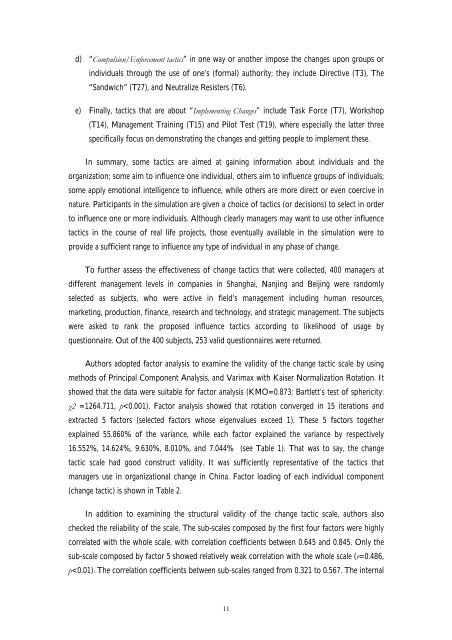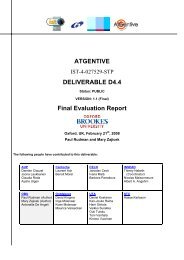LingHe Simulation - INSEAD CALT
LingHe Simulation - INSEAD CALT
LingHe Simulation - INSEAD CALT
Create successful ePaper yourself
Turn your PDF publications into a flip-book with our unique Google optimized e-Paper software.
d) “Compulsion/Enforcement tactics” in one way or another impose the changes upon groups or<br />
individuals through the use of one’s (formal) authority; they include Directive (T3), The<br />
“Sandwich” (T27), and Neutralize Resisters (T6).<br />
e) Finally, tactics that are about “Implementing Changes” include Task Force (T7), Workshop<br />
(T14), Management Training (T15) and Pilot Test (T19), where especially the latter three<br />
specifically focus on demonstrating the changes and getting people to implement these.<br />
In summary, some tactics are aimed at gaining information about individuals and the<br />
organization; some aim to influence one individual, others aim to influence groups of individuals;<br />
some apply emotional intelligence to influence, while others are more direct or even coercive in<br />
nature. Participants in the simulation are given a choice of tactics (or decisions) to select in order<br />
to influence one or more individuals. Although clearly managers may want to use other influence<br />
tactics in the course of real life projects, those eventually available in the simulation were to<br />
provide a sufficient range to influence any type of individual in any phase of change.<br />
To further assess the effectiveness of change tactics that were collected, 400 managers at<br />
different management levels in companies in Shanghai, Nanjing and Beijing were randomly<br />
selected as subjects, who were active in field’s management including human resources,<br />
marketing, production, finance, research and technology, and strategic management. The subjects<br />
were asked to rank the proposed influence tactics according to likelihood of usage by<br />
questionnaire. Out of the 400 subjects, 253 valid questionnaires were returned.<br />
Authors adopted factor analysis to examine the validity of the change tactic scale by using<br />
methods of Principal Component Analysis, and Varimax with Kaiser Normalization Rotation. It<br />
showed that the data were suitable for factor analysis (KMO=0.873; Bartlett’s test of sphericity:<br />
χ2 =1264.711, p
















